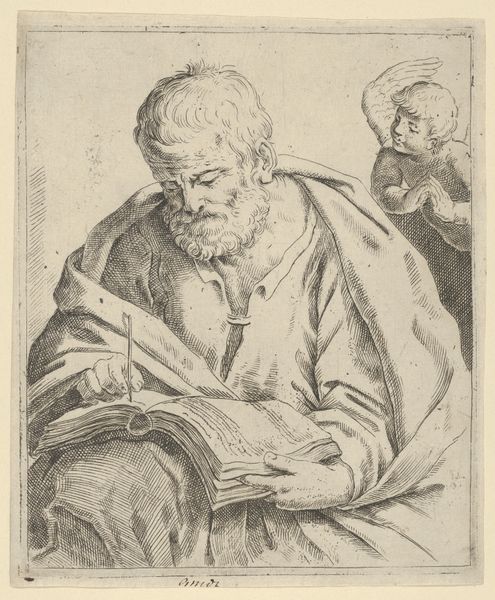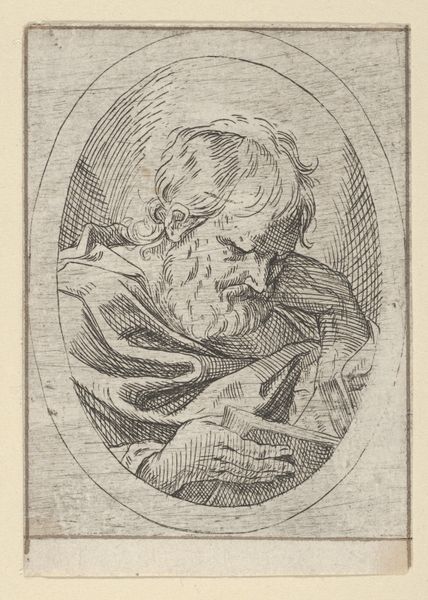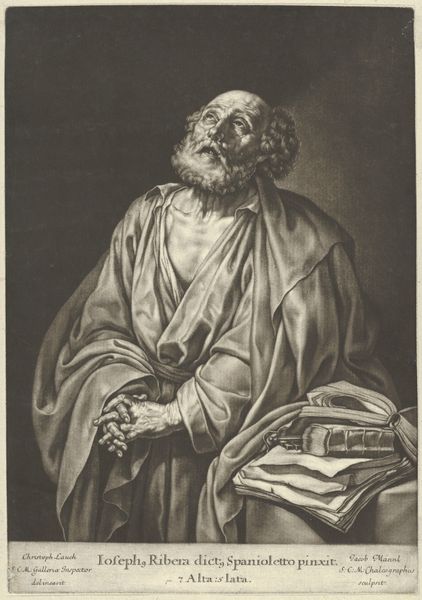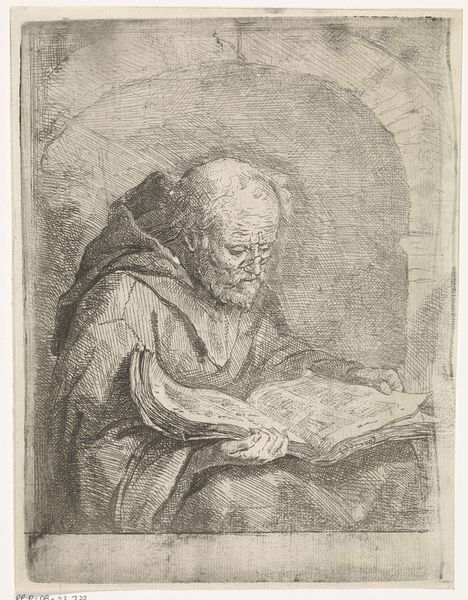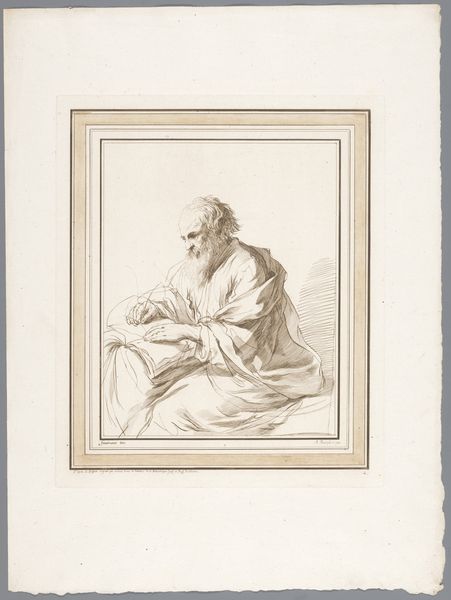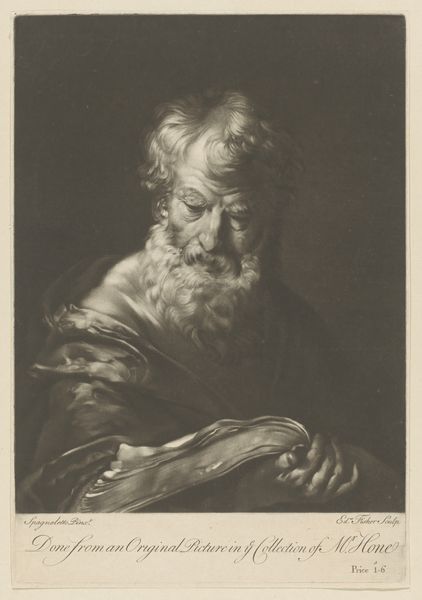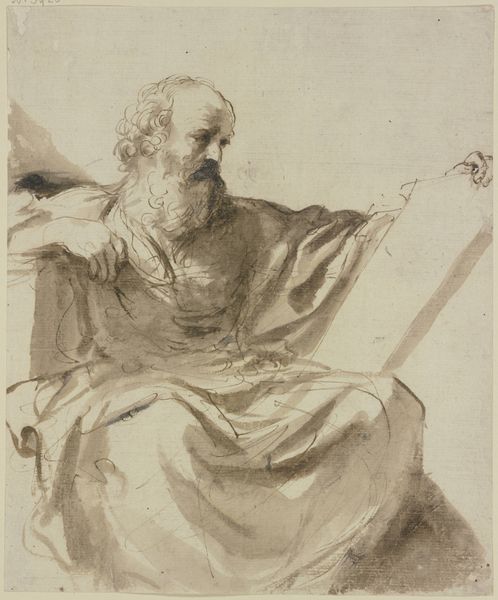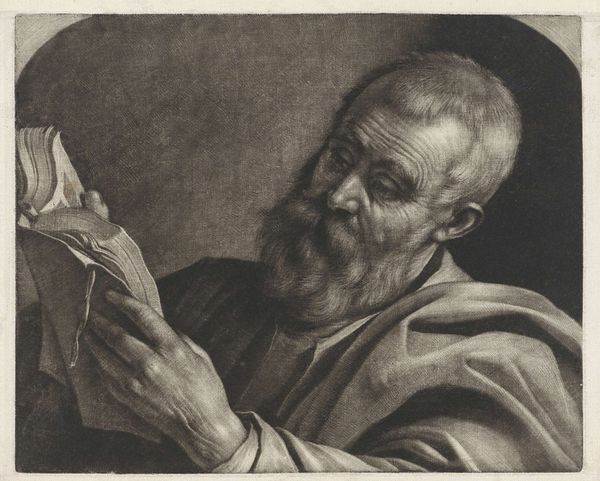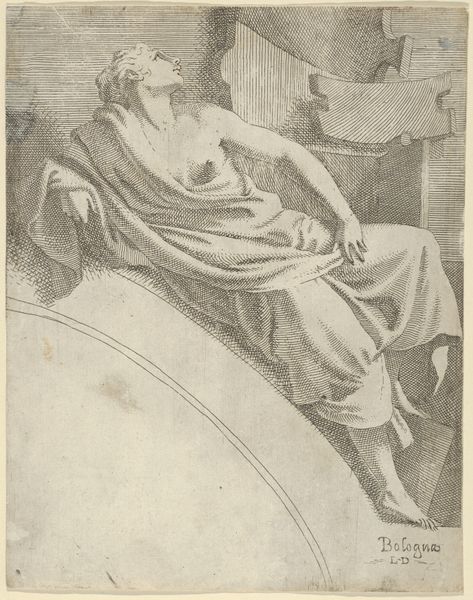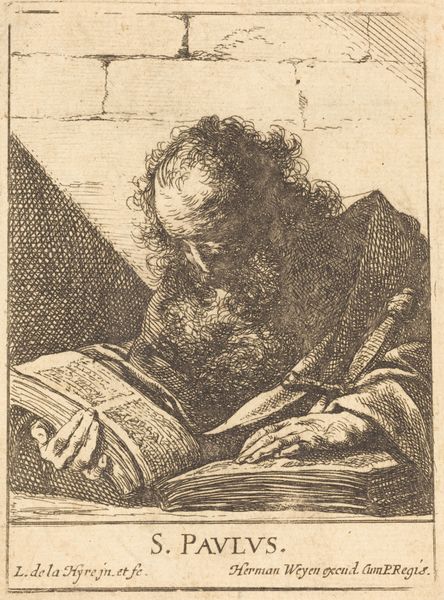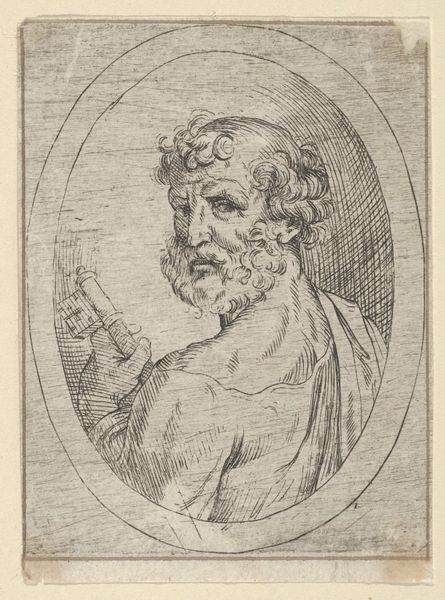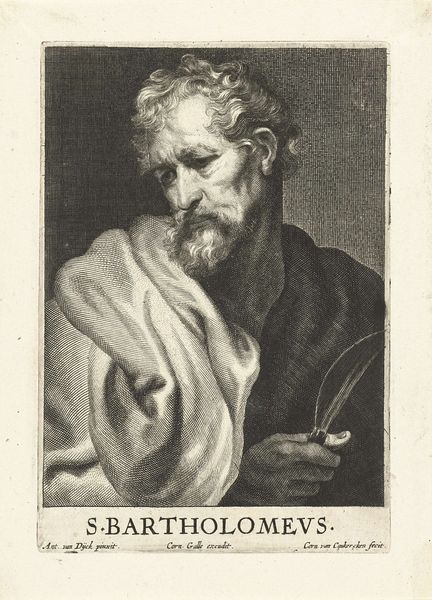
An old man seated and writing in a book (an evangelist?) 17th century
drawing, print, engraving
portrait
drawing
baroque
book
men
portrait drawing
genre-painting
engraving
Dimensions: Sheet: 7 13/16 × 6 7/16 in. (19.8 × 16.4 cm) Plate: 7 1/2 × 6 3/16 in. (19.1 × 15.7 cm)
Copyright: Public Domain
Editor: So, this is "An old man seated and writing in a book (an evangelist?)" from the 17th century. It’s attributed to an anonymous artist and lives at the Met. It's an engraving. There’s something incredibly serene about it, the old man so focused on his writing. How would you approach a piece like this? Curator: Immediately, I’m drawn to the process of its creation. This isn’t just an image; it’s the result of labor. Think of the craftsman meticulously carving lines into a metal plate to produce this image, capable of making countless copies. Consider the social context: prints like these democratized art, moving it away from the sole purview of the wealthy. Before, the act of image-making resided solely in painting for aristocratic display, not reproducible processes for the public, consider the way it shifted visual culture…what kind of knowledge did it help spread? Editor: That’s a fascinating point about accessibility and labor. I was focused on the religious implications given the potential evangelist subject. Curator: The materials also speak volumes. What kind of ink was used? What paper? These aren't neutral elements; they connect the image to trade networks, to specific workshops. How does understanding the economics of printmaking in the 17th century inform our viewing experience? What do you think the print medium enables that other artwork couldn't at this moment in history? Editor: I hadn't really considered it like that, thinking about the cost, the supply chains…the idea of the print being both a commodity and a piece of art is super interesting. It definitely challenges traditional notions of artistic value, pushing art beyond just aesthetics. I’ll remember to bring this approach in my future gallery visits. Curator: Indeed, examining the physical realities of art production unveils narratives often hidden in plain sight, enriching our interpretation.
Comments
No comments
Be the first to comment and join the conversation on the ultimate creative platform.
